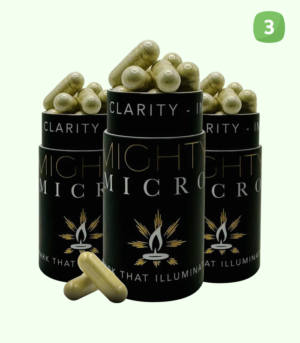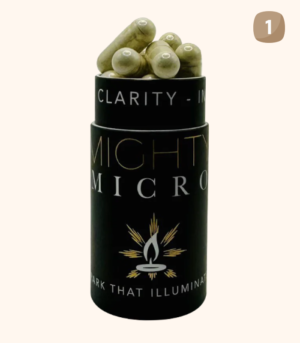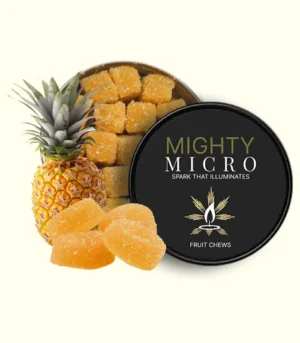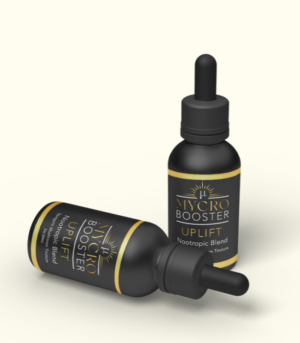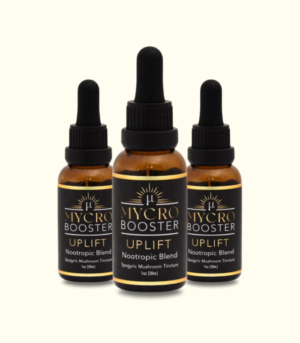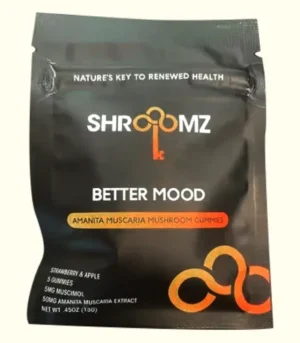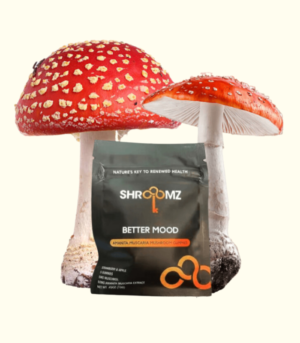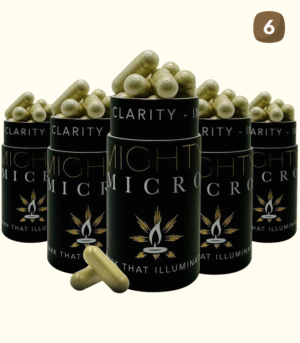According to a report by the American Kennel Club, police dogs possess an exceptional sense of smell that is estimated to be 10,000 to 100,000 times more sensitive than that of humans. This remarkable ability allows them to detect a wide range of substances, including narcotics, explosives, and even certain medical conditions. But can these highly trained canines detect mushrooms, specifically those with psychoactive properties like psilocybin?
The Science of Canine Smell
The olfactory system of dogs is incredibly sophisticated. Dogs have approximately 300 million olfactory receptors in their noses, compared to about 6 million in humans. The part of a dog’s brain dedicated to analyzing smells is, proportionally, 40 times greater than that of a human. This anatomical advantage allows dogs to detect minute traces of substances.
Example: According to Dr. Alexandra Horowitz, a dog cognition expert, dogs can detect a teaspoon of sugar in a million gallons of water, illustrating their extraordinary olfactory sensitivity.
Olfactory Training for Police Dogs
Police dogs undergo rigorous training to detect specific scents. This training involves associating the smell of a target substance with a reward, such as a favorite toy or treat. The training process is highly specialized and can take several months to years, depending on the complexity of the scents they are being trained to detect.
Can Dogs Detect Psilocybin?
While police dogs are typically trained to detect common narcotics such as cocaine, heroin, and marijuana, training them to detect psilocybin mushrooms presents unique challenges. The primary challenge lies in the specific chemical signature of psilocybin, which differs from more commonly encountered drugs.
A study by the National Institute on Drug Abuse found that while dogs can be trained to detect a wide range of substances, the effectiveness of their detection depends on the distinctiveness of the scent profile and the thoroughness of their training.
Buy Magic Mushroom Online
What are the different types of mushrooms that might be relevant for detection?
| Category | Mushroom | Characteristics | Notes | Detection |
| Edible Mushrooms | Button Mushrooms | Common in culinary dishes, also known as white mushrooms, crimini, or portobello. | Widely available and versatile. | White to brown, smooth cap. |
| Edible Mushrooms | Chanterelles | Bright yellow-orange color, fruity aroma. | Used in gourmet cooking. | Yellow-orange, wavy cap. |
| Edible Mushrooms | Morels | Honeycomb-like appearance. | Prized for unique flavor. | Honeycomb, hollow inside. |
| Edible Mushrooms | Shiitake | Brown cap, distinctive flavor, often used in Asian cuisine. | Widely used in soups and stir-fries. | Brown, umbrella-shaped cap. |
| Edible Mushrooms | Oyster Mushrooms | Fan-shaped, mild flavor, tender texture, often found growing on trees. | Common in various dishes. | Fan-shaped, white to grayish. |
| Medicinal Mushrooms | Reishi | Tough, woody texture, known for immune-boosting properties. | Used in teas and supplements. | Red to brown, kidney-shaped. |
| Medicinal Mushrooms | Lion’s Mane | White, pom-pom appearance, potential cognitive benefits. | Used in supplements and cooking. | White, shaggy, pom-pom-like. |
| Medicinal Mushrooms | Turkey Tail | Colorful, fan-like appearance, immune-supporting properties. | Often used in teas and extracts. | Colorful, concentric zones. |
| Medicinal Mushrooms | Cordyceps | Parasitic fungus, energy-boosting effects. | Found in supplements. | Long, finger-like orange structures. |
| Hallucinogenic Mushrooms | Psilocybin Mushrooms | Contains psilocybin and psilocin, notable species include Psilocybe cubensis. | Used in traditional and contemporary spiritual practices. | Small, brown, bell-shaped caps. |
| Hallucinogenic Mushrooms | Amanita Muscaria | Bright red cap with white spots, contains ibotenic acid and muscimol. | Known for its hallucinogenic properties. | Red with white spots, classic toadstool. |
| Poisonous Mushrooms | Death Cap | Greenish cap, white gills, highly toxic. | Can be fatal if ingested. | Greenish cap, white gills. |
| Poisonous Mushrooms | Destroying Angel | Pure white, highly toxic. | Often fatal if ingested. | All white, smooth cap. |
| Poisonous Mushrooms | False Morel | Brain-like appearance, contains gyromitrin. | Toxic if consumed. | Wrinkled, brain-like cap. |
| Bioluminescent Mushrooms | Jack-o’-Lantern | Glows in the dark, orange color. | Often mistaken for chanterelles. | Orange, glows in the dark. |
| Bioluminescent Mushrooms | Panellus Stipticus | Emits a faint greenish light. | Found on decaying wood. | Small, emits greenish light. |
| Mycorrhizal Mushrooms | Truffles | Underground, forms symbiotic relationships with tree roots. | Highly valued in culinary use. | Irregular, knobby appearance. |
| Mycorrhizal Mushrooms | Boletus | Thick brown cap, sponge-like pores, also known as porcini. | Prized for its flavor. | Thick cap, sponge-like pores. |
| Other Noteworthy Mushrooms | Honey Fungus | Parasitic relationship with trees, honey-colored cap, white spores. | Can cause tree damage. | Honey-colored, grows in clusters. |
| Other Noteworthy Mushrooms | Inky Cap | Shaggy appearance, cap dissolves into black ink. | Edible when young, but can react with alcohol. | Shaggy, black ink as it matures. |
Why is the ability to detect mushrooms by police dogs an important topic?
It enhances drug enforcement and public safety by identifying illegal substances like psilocybin mushrooms, which are classified as Schedule I substances in many areas. This helps prevent abuse and the associated health risks. Additionally, police dogs aid in environmental protection by detecting the illegal harvesting of rare and protected mushroom species, thus conserving biodiversity and preventing the spread of invasive species. Their ability to search large areas quickly and efficiently enhances law enforcement capabilities, making investigations faster and more effective.
Furthermore, training dogs to detect mushrooms leads to advancements in canine training methods, benefiting broader law enforcement efforts and raising public awareness about the dangers of illegal substances and the importance of conservation. This capability also supports legal and regulatory compliance by ensuring adherence to laws related to controlled substances and protected species, while acting as a deterrent to illegal activities.
What other methods exist for detecting mushrooms?
| Method | Description |
| Visual Identification | Identifying mushrooms based on cap shape, color, gill structure, stem characteristics, and spore print color. |
| Habitat and Substrate | Understanding the types of environments where specific mushrooms grow, such as forests, grasslands, or decaying wood. |
| DNA Sequencing | Using PCR (Polymerase Chain Reaction) to amplify specific DNA regions, which are then sequenced and compared to known databases. |
| Chemical Analysis | Using Gas Chromatography-Mass Spectrometry (GC-MS) and High-Performance Liquid Chromatography (HPLC) to analyze the chemical composition of mushrooms. |
| Spore Print Analysis | Placing the mushroom cap on a white or black surface to create a spore print that reveals spore color and pattern. |
| Electronic Nose (E-Nose) | Using sensors to detect volatile organic compounds (VOCs) emitted by mushrooms, mimicking the olfactory system of animals. |
| Microscopic Examination | Examining spores, hyphae, and other microscopic structures to differentiate between mushroom species. |
| Edaphic Factors | Analyzing soil composition, pH, moisture levels, and mycorrhizal associations to determine the presence and type of mushrooms. |
| Remote Sensing | Using satellite imagery and drones to detect and map mushroom populations, especially large fruiting bodies in open fields. |
| Cultural Techniques | Isolating and growing mushroom mycelium in controlled laboratory conditions to identify species based on growth patterns and requirements. |
| Bioluminescence | Detecting mushrooms that naturally glow in dark environments. |
Final Thoughts
While the detection of psilocybin mushrooms by police dogs is a complex and challenging endeavor, it is feasible with the right training and resources. The olfactory capabilities of dogs, combined with rigorous training protocols, enable them to detect a wide range of substances, including psilocybin mushrooms. However, the effectiveness of detection can be influenced by factors such as scent variability, legal considerations, and training quality.
FAQs
Can police dogs detect magic mushrooms specifically?
Yes, police dogs can detect magic mushrooms if they are trained to identify the scent of psilocybin, the active compound in psychedelic mushrooms. However, not all police dogs are trained for this purpose.
Are police dogs trained to identify psilocybin mushrooms?
Some police dogs are trained to detect psilocybin mushrooms, especially in areas where these substances are illegal and prioritized by law enforcement. The training focuses on the unique scent of psilocybin.
How accurate are police dogs in smelling mushrooms?
Police dogs are highly accurate when trained to detect specific scents. However, their effectiveness depends on the quality of their training and the conditions in which they are working.
Do police dogs confuse magic mushrooms with other fungi?
No, trained police dogs can differentiate between psilocybin mushrooms and other types of fungi. Their training involves identifying specific chemical compounds, not general mushroom scents.
Can the smell of dried mushrooms be detected by police dogs?
Yes, police dogs can detect dried mushrooms if they have been trained to identify psilocybin. Drying does not eliminate the compounds that produce the scent.
What compounds in mushrooms do police dogs smell?
Police dogs detect psilocybin and psilocin, the psychoactive compounds in magic mushrooms. These compounds have a distinct scent that trained dogs can recognize.
Is psilocybin detectable by trained canine units?
Yes, psilocybin is detectable by canine units that have been specifically trained for this purpose.
How do police dogs differentiate between legal and illegal substances?
Police dogs rely on scent cues to identify specific substances. It is up to law enforcement to determine if the detected material is illegal, based on local laws.
Can dogs smell mushrooms through airtight containers?
It depends on the quality of the container. While airtight containers reduce scent leakage, poorly sealed containers may still allow trace scents to escape, which dogs can detect.
How often are police dogs used in mushroom-related investigations?
The frequency varies by region. In areas where magic mushrooms are a priority for law enforcement, canine units may be more commonly used.
What are the legal consequences if police dogs find psilocybin mushrooms?
Legal consequences depend on the state’s laws. In states where psilocybin mushrooms are illegal, possession can result in fines, jail time, or other penalties.
Can you hide mushrooms from police dogs?
It is extremely difficult to hide substances from trained police dogs, as they can detect even trace amounts of scent.
Do police dogs react the same to edible and psychedelic mushrooms?
No, police dogs trained for drug detection specifically react to psilocybin mushrooms and not to edible mushrooms used for cooking.
How do police dogs react when they find magic mushrooms?
Dogs are trained to respond in specific ways, such as sitting or signaling their handler when they detect the target scent.
Can dogs smell mushrooms in food products, like gummies or chocolates?
Yes, if psilocybin is present in food products, trained dogs can detect the scent despite the food’s masking aroma.

